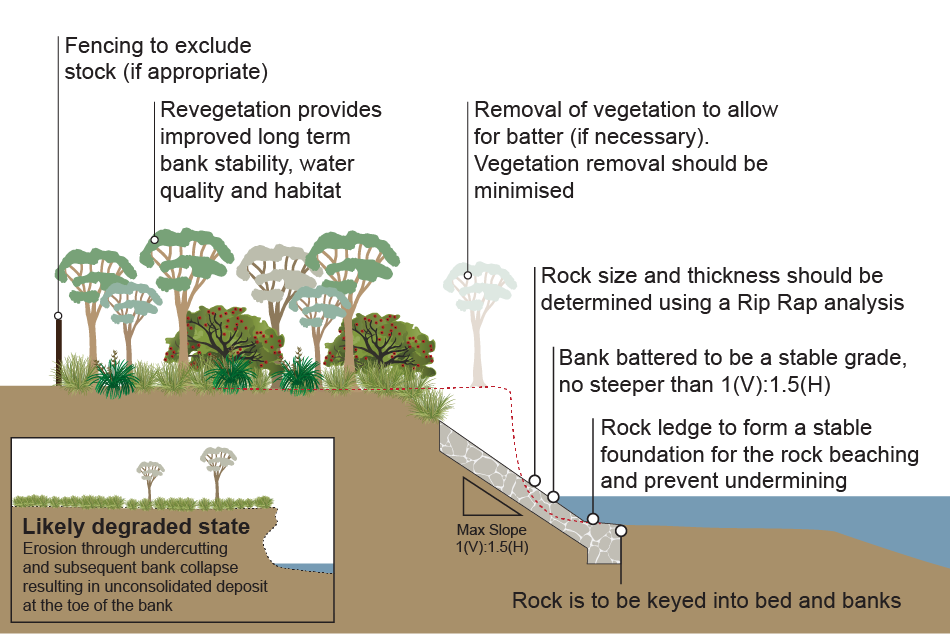|
|
Rock armouringRock armouring (also known as rock rip rap, rock revetment or rock beaching) involves the placement of quarried, angular rock against a riverbank to prevent further erosion of the bank. Rock armouring is commonly used in the protection of infrastructure such as bridges and culverts. The design of the rock armouring requires hydraulic calculations to determine an appropriate rock size to ensure that the rock will not be washed away. The rock is graded and placed to a design thickness to ensure that it forms an interlocking mass. Often this intervention is combined with vegetation establishment to stabilise the bank, eventually making the engineered structure redundant. Potential benefits from this intervention:
Potential negative implications from this intervention:
Intervention considerations:
Additional informationPublications: Department of Sustainability and Environment (DSE). 2007. Technical Guidelines for Waterway Management, Department of Sustainability and Environment, Victoria. Rutherfurd, I.D., Jerie, K. and Marsh, N. 2000. A Rehabilitation Manual for Australian Streams, Volumes 1 and 2. CRC for Catchment Hydrology and LWRRDC. Canberra. Links: Aggregates and rock for engineering purposes - Guidelines for the specification of armourstone Last updated: 14 December 2021 This page should be cited as: Department of Environment, Science and Innovation, Queensland (2021) Rock armouring, WetlandInfo website, accessed 18 March 2024. Available at: https://wetlandinfo.des.qld.gov.au/wetlands/management/rehabilitation/rehab-process/step-4/intervention-options/rock-armouring-mod.html |

 — Department of Environment, Science and Innovation
— Department of Environment, Science and Innovation


